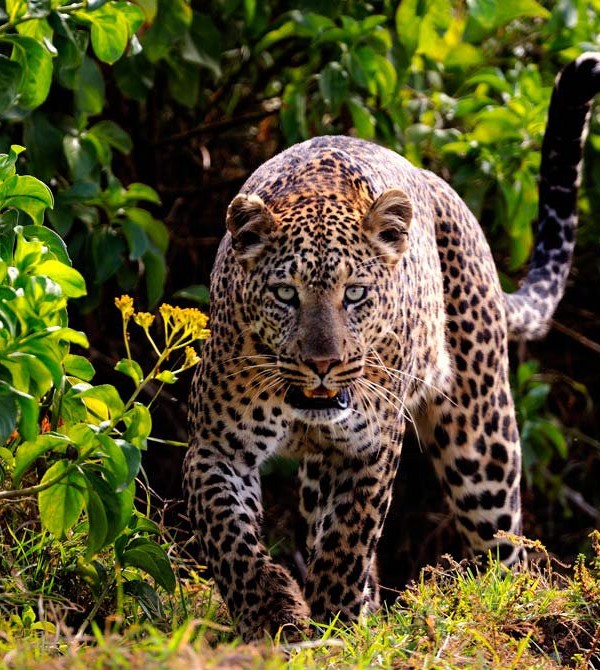The leopard (Panthera pardus) is one of the five “big cats” in the genus Panthera. It is a member of the Felidae family with a wide range in regions of sub-Saharan Africa, West Asia, the Middle East, South and Southeast Asia to Siberia.
Compared to other members of Felidae, the leopard has relatively short legs and a long body with a large skull. It is similar in appearance to the jaguar, but is smaller and more lightly built. Its fur is marked with rosettes similar to those of the jaguar, but the leopard’s rosettes are smaller and more densely packed, and do not usually have central spots as the jaguars do. Both leopards and jaguars that are melanistic are known as black panthers.
The leopard’s success in the wild is due to its well camouflaged fur, its opportunistic hunting behaviour, broad diet and strength to move heavy carcass into trees, its ability to adapt to various habitats ranging from rainforest, steppe to arid and montane areas and to run at speeds up to 58 kilometres per hour (36 mph).
It is listed as Near Threatened on the IUCN Red List because leopard populations are declining in large parts of their range. They are threatened by habitat loss and pest control. Their habitats are fragmented and they are illegally hunted so that their pelts may be sold in wildlife trade for medicinal practices and decoration.
Facts about leopards
• Leopards are astoundingly strong. They are pound for pound the strongest of the big cats. They are able to climb trees, even when carrying heavy prey, and often choose to rest on tree branches during the day. One reason why leopards sometimes take their prey up in the trees is to ensure lions or hyenas can’t steal them.
• Leopards are renowned for their agility. They run up to 58km/h and can leap 6m horizontally and 3m vertically. They are also very strong swimmers.
• The leopard is the most elusive and secretive of the large felids. They are extremely difficult to trace and locate in the wild.
• Leopards are predominantly solitary animals that have large territories. While male territories are larger than females and tend to overlap, individuals usually only tolerate intrusion into ranges for mating. They mark their ranges with urine and leave claw marks on trees to warn others to stay away.
• Like cats kept as companions, leopards will growl when angry and purr when content. They have various vocalisations such as a rasping cough which they perform to announce their presence to other leopards.
• Leopards tend to have two or three cubs per gestation. Mothers refrain from wandering their territories after giving birth until their young are capable to come with them. Cubs suckle for around 3 months and are kept hidden for about the first 8 weeks to protect them from predators.
• Leopards tend to have distinctive dark spots called rosettes, which create beautiful patterns against their otherwise light fur. Black leopards however have dark fur which makes it difficult to see the spots. They appear almost solid black and are often called black panthers.

